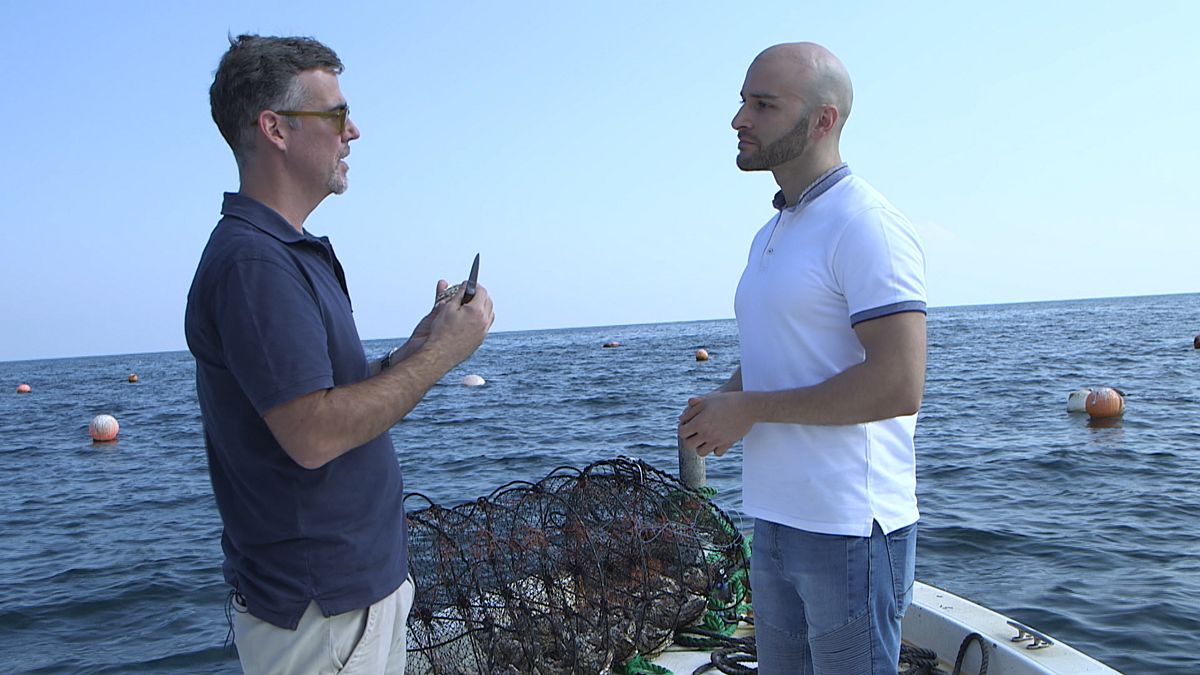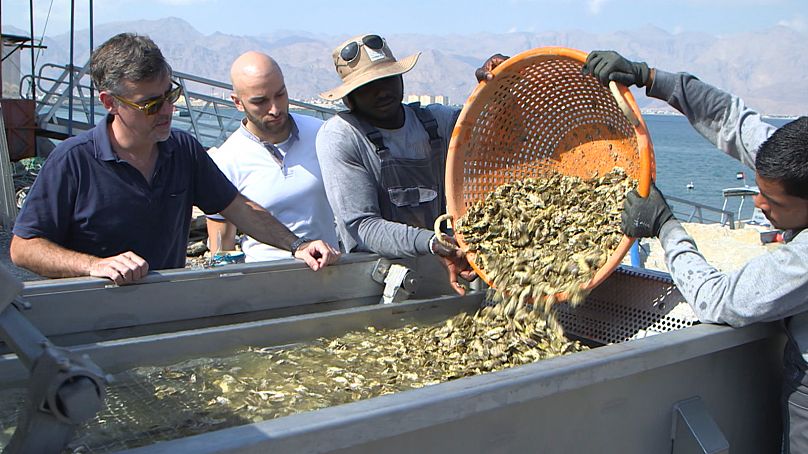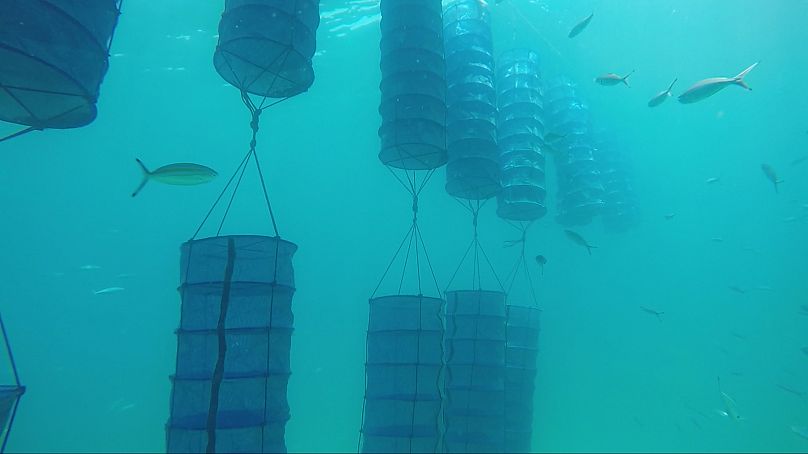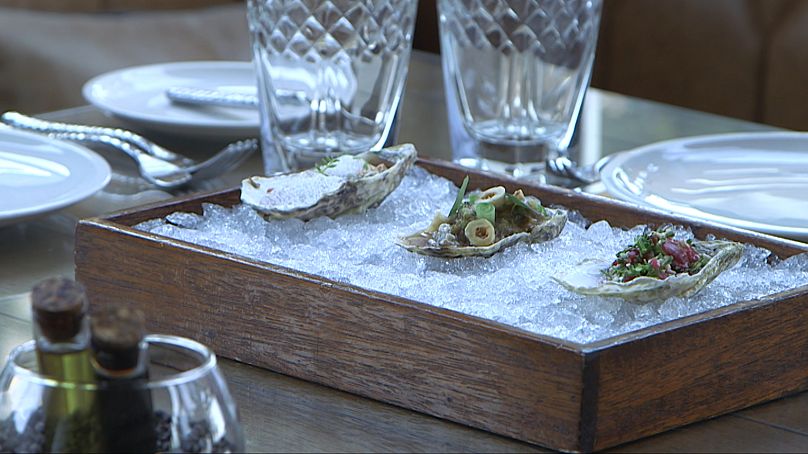In the deep waters of Dibba Bay, in the northern emirate of Fujairah, clusters of mollusks hang like lanterns across 100-metre lines.
In the deep waters of Dibba Bay, in the northern emirate of Fujairah, clusters of mollusks hang like lanterns across 100-metre lines.
This is seafaring farmer Ramie Murray’s underwater garden, where he tends to his colony of oysters.
Oysters are more commonly cultivated in the cooler waters of Europe and North America, says the Scotsman, whose four-year old farm was a pioneering effort.
“When I first started, the first thing people [would] say is, ‘Oysters can’t grow in warm water, they must be rubbish,’” recalls the founder of Dibba Bay Oysters who, determined to prove the naysayers wrong, now produces up to 100,000 oysters per month.
The process
Murray imports Pacific Bay oyster spats from Europe, although they originate from Japan.
The adaptable species then takes on unique qualities as they are cultivated in the UAE’s warm waters.
“They’re much firmer,” says Murray, comparing his oysters to ones from Europe, which can often be smaller. “It’s more like a piece of meat that you can actually bite into. There’s a crunch.”
As filter feeders, oysters directly absorb nutrients from their surroundings, meaning that Dibba Bay mollusks are infused with flavours from the Gulf of Oman.
“The majority of what makes an oyster an oyster, is its environment,” Murray says, pointing to the region’s waters giving his shellfish their white shells and often larger-than-average size.
Most oysters take years to reach full maturity, yet those nourished in Dibba Bay’s waters only need about eight months, according to Murray.
This accelerated growth is due to the combination of year-round warm weather, he says, and the abundance of nutrients in the water.
Oysters are known to be rich in protein and omega-3s, they’re also thought to contain all nine essential amino acids, according to some medical journals.
Ocean-to-table
Murray harvests his oysters twice a week, and he’s looking to scale-up his production to 150,000 oysters every four weeks, this year.
Currently, he serves mainly UAE restaurants and hotels, and he’s looking to expand into Russia and Europe.
In local supermarkets, Murray’s mollusks fetch up to $25 a dozen.
Two kilometres away from his oyster beds is one of Murray’s first customers, executive sous chef Georgiy Danilov of the Fairmont Fujairah Beach Resort.
He buys up to 200 oysters a week from Murray and prepares them in a way which accentuates their uniqueness.
Deliciously nutritious
In France, flat-shelled Belon oysters are known for their seaweed and hazelnut accents, while the shellfish of Japan’s Yatsushiro Bay, carry a sweet and briny flavour.
“Intense, but not overwhelming,” is how Danilov describes the pronounced taste of Dibba Bay oysters. “The salinity level & the acidity level is still there - but they are not overpowering each other.”
To bring out their flavour, the chef uses an Arabic ‘harr’, or spicy emulsion on the oysters. He then garnishes them with pickled Lebanese chilis and a spray of lime foam.
Danilov says these ingredients balance the oyster’s saltiness, while encouraging hunger. He also suggests that the shellfish are best served on a bed of ice and before a main meal.




